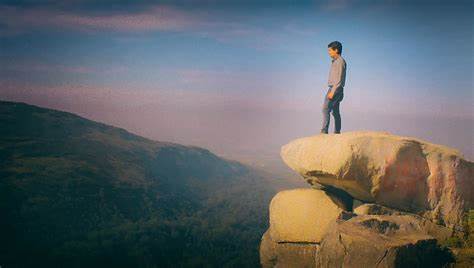
As a quick recap, I’ll summarize Parts One and Two to set up this post.
In Part One, the title question was posed. It was followed by areas of concern I’ve observed in our world today, ones which signal potential trouble for our society in the United States as well as globally.
In Part Two, each area of concern was addressed from an historical perspective. Instances were given of past societies and civilizations which ceased to exist or at least fell to invading or revolutionary rule that did away with the old way of life.
In Part Three, I’ll provide some answers as to where we as a society are headed. Nothing is certain, but comfort can be found or alarms can be sounded based on data from the present day scenario.
ASSESSMENT
Doomsday predictions are a common part of our human saga. I generally take them lightly because they virtually never come true. No doubt, there have been exceptions. Actual assessment of our prospects for the future should be based on science. Two of them will be presented here as examples.
One of the more famous forecasts for collapse came out of Massachusetts Institute of Technology (MIT) in 1972. Their team of scientists conducted a study that foretold this collapse would occur in the middle of the 21st century. It would be due to overexploitation of planetary resources. In 2020, a director at one of the largest accounting firms in the world decided to do her own independent research to see how well the MIT model was holding up. Gaya Herrington is Sustainability and Dynamic System Analysis Lead at KPMG. Her analysis suggests the 1972 prediction is on course for a steep decline in industrial production and economic conditions. Loss of food production and deteriorating standards of living will follow. The decline figures to begin in 2040.
Nature Scientific Reports published the results of a study by two physicists in 2020 that found global deforestation is a key to the future of civilization. An excerpt from their study follows. “Based on the current resource consumption rates and best estimate of technological rate growth our study shows that we have very low probability, less than 10 percent in most optimistic estimate, to survive without facing a catastrophic collapse.” They conclude at the current the rate of population growth, along with the consumption rate of resources, “we have a few decades left before an irreversible collapse of our civilization.”
CAN HUMANITY RISE TO THE OCCASION?

For this article, I’ve tried to find scientific reports that challenge the consensus on climate change dangers. I haven’t found any. There are those who feel the warnings are overblown rhetoric. There are those that perceive climate change as natural and cyclic, not caused by humans, and so it’s something we just have to adjust to in the coming years. But no, science denying climate change is difficult to find.
Most of the other concerns I raised in Part One seem to be dwarfed by climate change and its effects. Political unrest and war can potentially shape our civilization in a profoundly negative way, but outside of nuclear war (which seems too grisly or too dangerous to themselves for even our current warmongers to unleash), these are likely to be fended off by the balance of power in the world. Pestilence can certainly contribute to collapse of civilization, but I believe the medical community and international health organizations can successfully neutralize diseases before they get totally out of control, unlike the situation with the Black Death. Global population decline can definitely wreak havoc on human society and be part of an overall collapse, but when it has happened in the past, growth rates have recovered satisfactorily. Thus, climate change appears to be our most formidable foe.
The ingenuity of the human species has demonstrated its ability to innovate and mobilize its way out of catastrophic events. The problem facing us with regard to climate change, food shortages, corporate greed, megalomania, large-scale violence and group hatred is our capacity to care enough to do something about it.
“The necessary changes will not be easy and pose transition challenges but a sustainable and inclusive future is still possible,” said Herrington.
In the study published by Nature Scientific Reports, the authors state “it will take a massive amount of collective action to reverse direction and save our society from collapse.”
A mostly pessimistic report by Paul R. Ehrlich an Anne H. Ehrlich for the National Library of Medicine poses the question, “Can a collapse of global civilization be avoided?” After a long litany of disheartening reasons why humanity is in major trouble, they said they do think a collapse can be avoided in this century. “The answer is yes, because modern society has shown some capacity to deal with long-term threats, at least if they are obvious or continuously brought to attention (think of the risks of nuclear conflict).”
And in the End
We’re standing on a precipice, an abyss below. Many call out warnings. Many choose to ignore the danger signs. Others are ignorant of the warnings even being warnings. We are ripe for collapse in the coming decades. We do have the capacity to avert a collapse, but the human race must rise up out of denial and apathy to save our children’s children’s children who we are too short-sighted to see on the time horizon.
